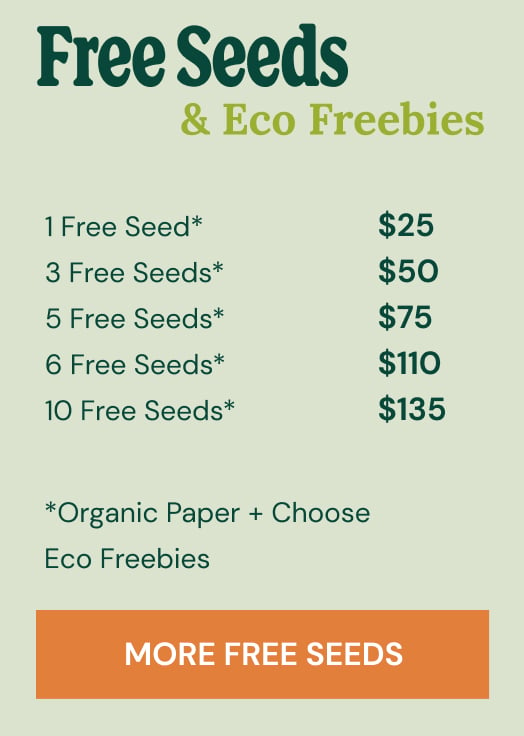.

4×4 Grow Tent Setup: How Many Plants and How to Maximise Yield
Wondering how many plants fit in a 4×4 grow tent or what kind of yield to expect? This grower’s guide covers plant count ranges, realistic harvest estimates, and essential setup tips, including lighting, ventilation, and training methods to get the most from your space.
Contents:
- Why a 4×4 grow tent is a grower’s favorite choice
- How much can a 4×4 grow tent yield? (estimated ranges)
- How many cannabis plants can you fit in a 4×4 grow tent?
- ×4 grow tent setup: step-by-step guide
- Best training techniques to maximise yield
- Essential grow equipment for a 4×4 tent setup
- Common mistakes to avoid in a 4×4 grow tent
- Get the most from your 4×4 grow tent
Key takeaways:
- How many plants: 1–16 depending on your method (low to high density)
- Expected yield: 100–900 grams per harvest based on experience and setup
- Best methods: Sea of green (SOG), screen of green (ScrOG), low-stress training (LST)
- Key equipment: LED lights, inline fan with carbon filter, organic nutrients, hygrometer
A 4×4 grow tent is one of the most versatile setups for indoor growers. Whether you’re growing cannabis or leafy greens, this size offers a solid middle ground: not too big, not too small. But it’s easy to get overwhelmed with questions like “How many plants can I fit in here?” or “How much can I expect to harvest?”.
This guide breaks everything down clearly—how many plants fit, expected yields, and how to get the most from your tent. We’ll walk through key techniques like SOG, ScrOG, and LST, as well as lighting, ventilation, and equipment. Whether you're a new grower or looking to fine-tune your setup, this is the practical info you need.
Why a 4×4 Grow Tent Is a Grower’s Favorite Choice
The 4×4 grow tent is a firm favorite among hobbyists and small-scale indoor growers. It’s large enough to handle multiple plants and different training methods, but compact enough to manage easily in a spare room or shed.
Cannabis growers in particular make use of the balance this tent offers. You can experiment with growing techniques, test different strains, and manage the environment closely, all without needing a full grow room. It also allows for seasonal or year-round growing, regardless of the weather outside.
Key advantages include:
- Efficiency: Optimises light and space
- Cost-effective: Lower running costs than larger tents
- Control: Easier to maintain temperature, humidity, and cleanliness
- Versatility: Supports a range of growing methods and plant sizes
How Much Can a 4×4 Grow Tent Yield? (Estimated Ranges)
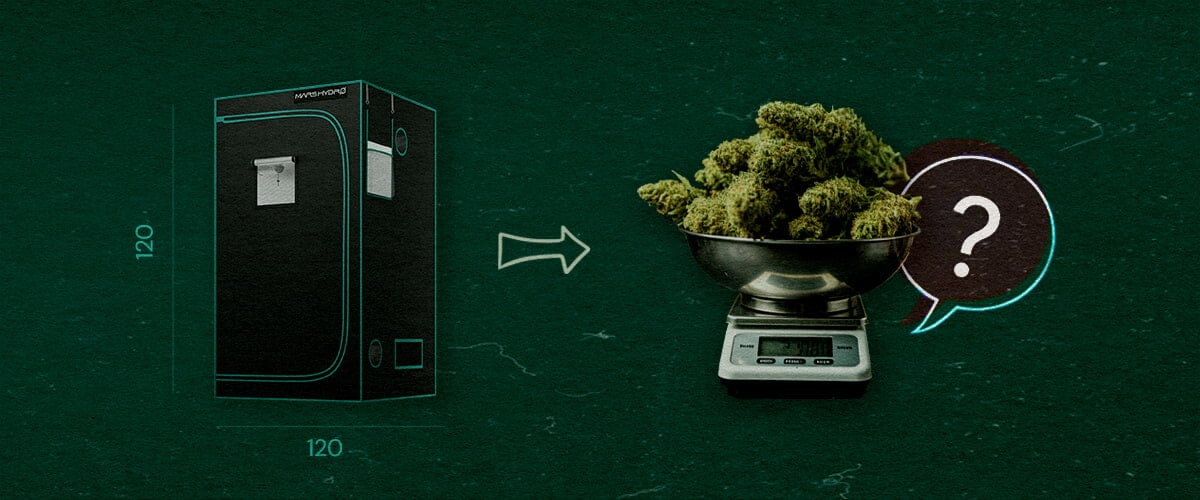
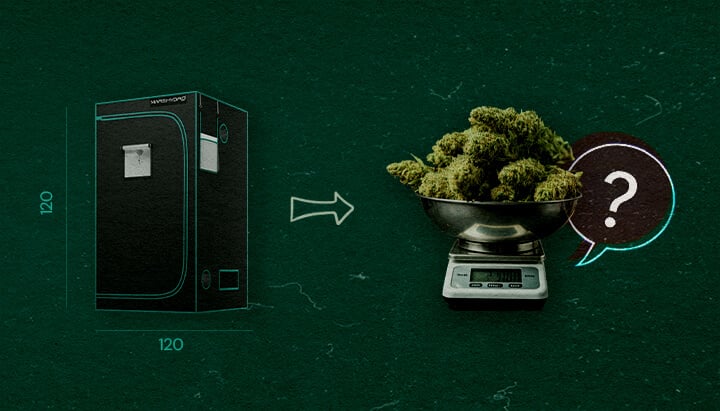
Yields from a 4×4 tent depend on several factors—your experience, choice of equipment, plant training method, and strain selection. But as a rough guide, here’s what most growers can expect:
- Beginner yield: 115–225 grams (4–8 ounces) total
- Moderate/optimised setup: 285–455 grams (10–16 ounces)
- Advanced/high-efficiency grow: 510–900+ grams (18–32+ ounces)
It’s possible to exceed these numbers, but that requires dialling in every detail from lighting to airflow to nutrients. These are the main variables that impact your yield:
- Light quality and intensity: The better the light, the more energy your plants receive for growth and bud production. LED lights rated at 400–600 true watts are ideal for a 4×4 tent.
- Nutrient and water management: Poor feeding schedules or low-quality water can stunt growth. Organic nutrients like worm castings, compost teas, or seaweed-based feeds promote soil health and long-term productivity.
- Genetics: Some strains naturally yield more. Sativa-leaning hybrids may stretch tall and wide, while indica strains tend to be bushier.
- Training method: Techniques like ScrOG or SOG directly influence how efficiently plants fill out your canopy.
- Environmental stability: Keeping temps between 20–28°C and humidity in the 40–60% range helps prevent mold, pests, and growth issues.
How Many Cannabis Plants Can You Fit in a 4×4 Grow Tent?
The number of plants per square meter you can grow in a 4×4 tent isn’t fixed. It depends on your approach—a few large, well-trained plants, or many smaller ones. Your legal limits and strain choices also affect this.
Below are the three main density approaches growers take.
Small Plant Count (1–4 Large Plants)
This method is best for growers who want to use ScrOG or LST techniques to expand the canopy of a single or select few plants.
- Each plant has plenty of room for airflow and training
- Fewer plants mean easier individual care and less risk of overcrowding
- Can deliver a high yield per plant with proper training
Medium Plant Count (4–8 Plants)
This approach is ideal for growers who want a balanced setup—decent output without too much complexity.
- Plants can still be topped or lightly trained
- Less likely to outgrow the space too quickly
- Allows you to grow a couple of different strains without overcrowding
High Plant Count (8–16 Small Plants — SOG Method)
If you're aiming for quick harvests and maximum turnover, the sea of green (SOG) method fits this approach.
- Plants are flowered young to limit size
- Closely spaced plants fill out the canopy quickly
- Higher total yield in less time, though each plant is smaller
4×4 Grow Tent Setup: Step-by-Step Guide
Setting up your 4×4 grow tent correctly is key to having a smooth, productive grow. Here’s a simple, structured approach.
Step 1: Choose a Suitable Spot
Place your tent in a location with access to electricity, reasonable airflow, and minimal light leaks. Avoid cold floors or damp basements unless you can insulate the space.
Step 2: Assemble the Tent
Follow the instructions exactly. Be sure the frame is stable, zippers work smoothly, and there are no tears in the fabric or light leaks in the seams.
Step 3: Install Grow Lights
Hang LED lights using adjustable ratchet hangers. Keep lights 30–45 cm above plants during veg and 20–30 cm during flowering. Use full-spectrum LEDs with a power draw of 400–600 watts for best results.
Step 4: Set Up Ventilation
Install an inline exhaust fan with a carbon filter for odour control. Add an oscillating fan inside the tent to move air between the plants. Passive intake flaps or a small intake fan will help bring in fresh air.
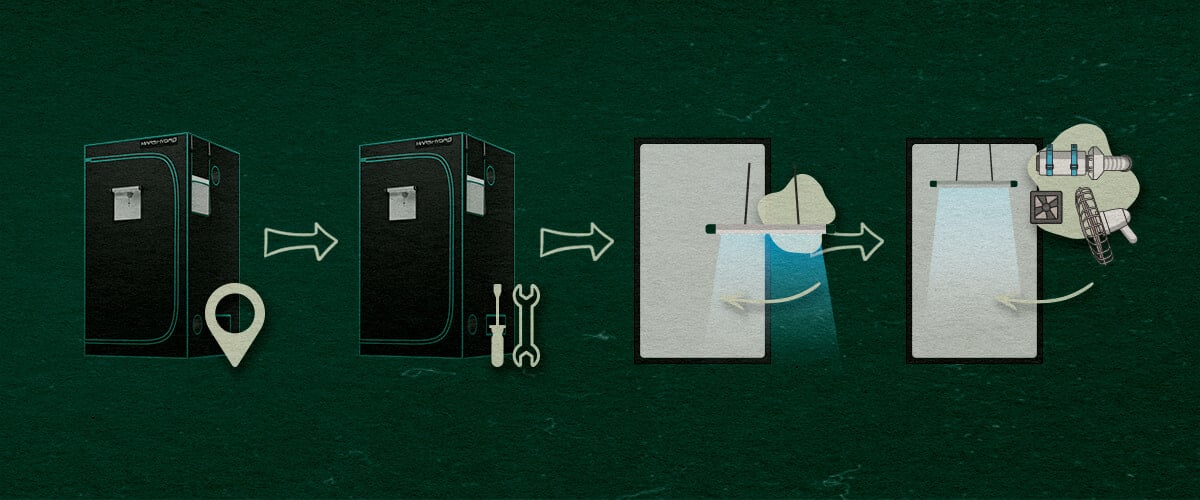
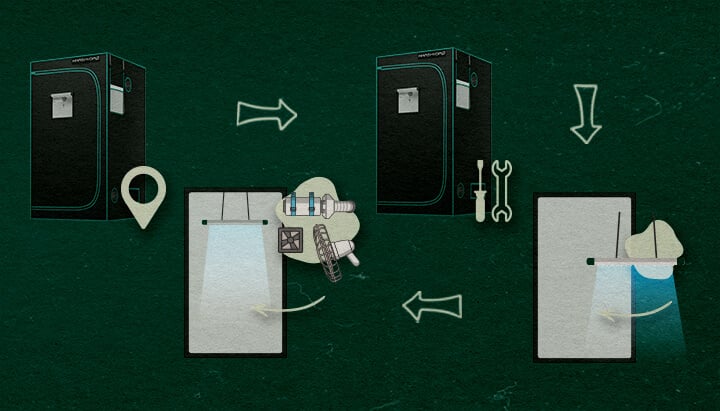
Step 5: Place Your Plants
Use fabric pots or air-pruning containers to improve root health, and use trays or saucers underneath. Adjust spacing based on your chosen plant count method.
Step 6: Set Up Timers
Photoperiod plants need light timers: use an 18/6 cycle for vegetative growth and 12/12 to trigger flowering.
Autoflowering plants don’t require a light change, and many growers keep them on 18/6 throughout.
Step 7: Monitor Temperature and Humidity
Use a digital hygrometer and thermometer. Keep temps in the 20–28°C range and adjust humidity according to growth stage (seedling: 65–70%, veg: 50–60%, flowering: 40–50%).
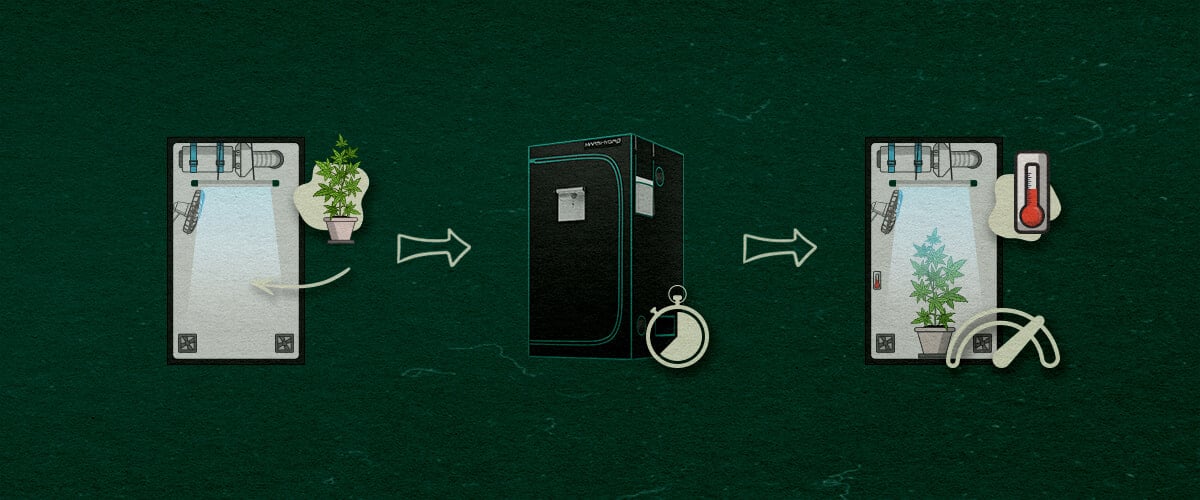
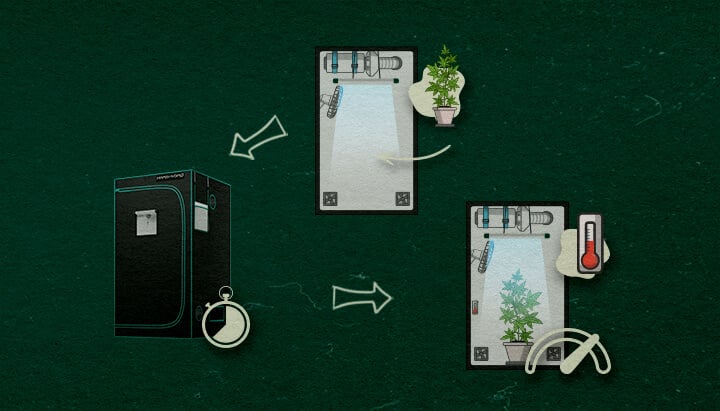
Best Training Techniques to Maximise Yield


Training techniques can help you control plant height, increase light exposure, and boost your harvest. You don’t need advanced tools or skills—only a bit of patience and an ability to follow instructions!
Sea of Green (SOG)
The SOG method uses many small plants, grown close together and flipped into flowering early—after just 2–3 weeks. Start with clones or uniform seedlings (F1 seeds are perfect for this, too).
- Grow each plant in a small pot (3–5 litres)
- Flower early and harvest quickly
- Works best when using one strain for even growth
Screen of Green (ScrOG)
ScrOG focuses on training one or more larger plants to grow horizontally through a mesh screen.
- Place a screen 30–40 cm above the pots
- As plants grow, tuck and bind branches to the underside of the screen
- Creates a flat, even canopy for maximum light absorption
- Ideal for growers with time to train and maintain structure
Low-stress training (LST)
LST involves gently bending and tying down stems to encourage lateral growth.
- Start when plants are young (2–3 weeks old)
- Use soft ties or garden wire to hold the stem in a lateral position
- Helps light reach lower bud sites
- Great for controlling height in limited vertical space
Topping
Topping is the act of cutting off the main growing tip to promote bushier growth.
- Use clean scissors to snip the top growth node
- Performed at 3–5 weeks of age during the vegetative stage
- Encourages the plant to grow two main colas instead of one
- Pairs well with LST or ScrOG setups
- Do not use this method with autoflowering plants!
Essential Grow Equipment for a 4×4 Tent Setup
Your choice of gear makes a big difference in your grow’s efficiency and success. These are the essentials for any 4×4 tent setup.
Grow Lights (LED or HID)
Lighting is the single most important factor for plant development.
- Choose full-spectrum LED grow lights for lower heat and better efficiency
- Target 400–600 actual watts for full coverage
- Use timers to automate light cycles for photoperiod plants
Ventilation System (Inline Fans & Filters)
A good airflow system keeps plants healthy and controls grow tents odour.
- Install a carbon filter to neutralise smells
- Use ducting to vent warm, humid air out of the space
- Oscillating fans help prevent hotspots and reduce mold risk
Environmental Monitoring (Temp, Humidity)
You must monitor your growing environment consistently.
- Digital hygrometer/thermometer combos are cheap and reliable
- Consider a basic controller or Wi-Fi plug for alerts and automation
- Avoid major temperature swings and high humidity during late flowering
Nutrients and Watering Systems
Plants need a consistent feeding and watering routine.
- Organic options like worm castings, compost tea, and liquid seaweed are great for soil grows
- For hydroponics, use clean, pH-balanced water and perform regular EC checks
- Water when the top 2–3 cm of soil feels dry or when pots feel light
Common Mistakes to Avoid in a 4×4 Grow Tent


Even experienced growers make errors. These are some of the most common and avoidable problems:
- Overcrowding: This restricts airflow and increases light competition, which leads to smaller buds and raises the risk of mold.
- Poor lighting choices: Low-quality lights may stunt plant growth and reduce yield. Always check the actual wattage and spectrum coverage.
- Skipping ventilation: Stale air and excess humidity create the perfect environment for pests and mold.
- Inconsistent environment: Frequent temperature swings or humidity drops can stress plants and reduce bud development.
- Overfeeding or underfeeding: Beginners often add too many nutrients, causing lockout. Underfeeding slows growth. Follow a reliable feeding chart and adjust based on plant response.
- Incorrect pH levels: If the pH of the water or nutrient solution is too high or low, plants can’t absorb nutrients—even if they're present.
- Using the wrong training at the wrong time: Topping too late or training during flowering can shock plants and reduce yields.
- Neglecting plant observation: Regular visual checks help you spot issues early, like pests, mold, or nutrient deficiencies.
Get the Most From Your 4×4 Grow Tent
A 4×4 grow tent offers the ideal space for manageable but high-yielding indoor cultivation. The key is not just how many plants you fit, but how well you set up and manage the environment. By choosing the right training method, investing in proper lighting and airflow, and sticking to a consistent routine, you can turn this modest footprint into a highly efficient growing space.
Whether you're growing cannabis for personal use or vegetables to stay self-sufficient, the 4×4 tent gives you room to experiment and improve with each cycle. If you focus on plant health, environmental control, and learning from each grow, then your harvest will reflect the results.
Categories
Grow Cannabis With RQS


























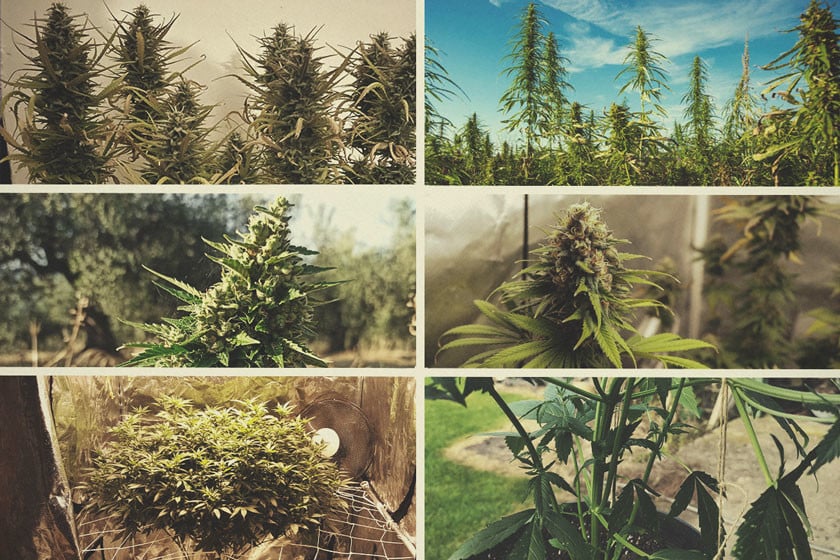

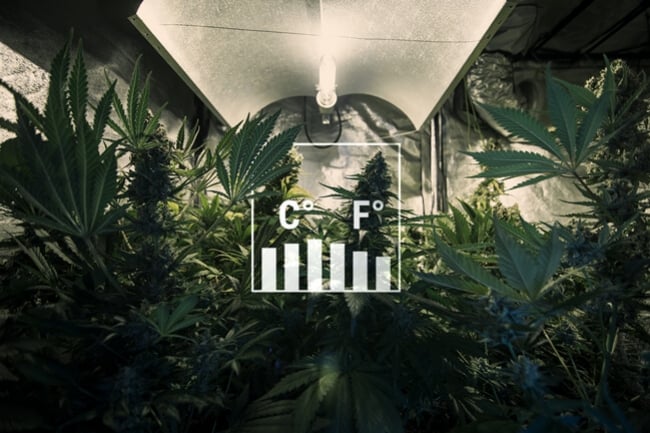
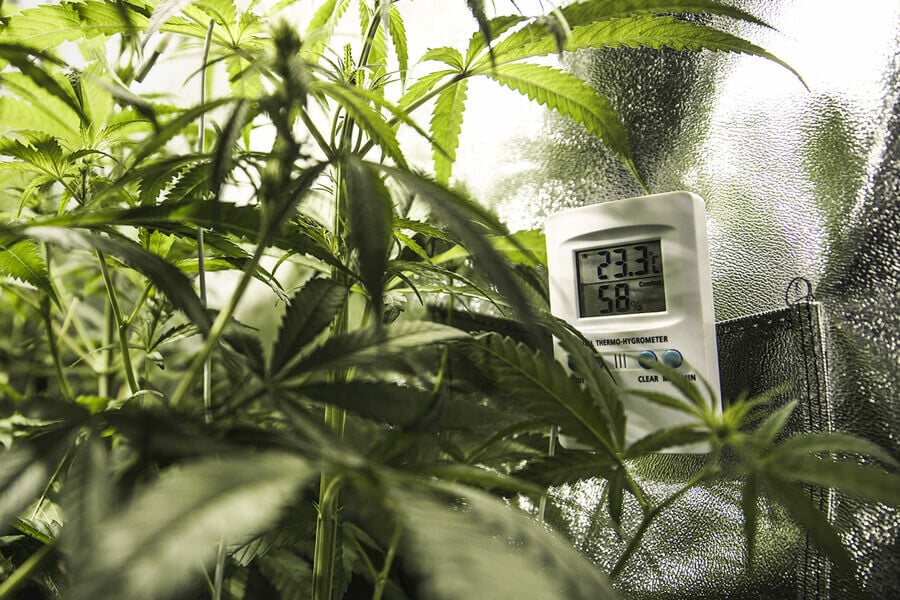
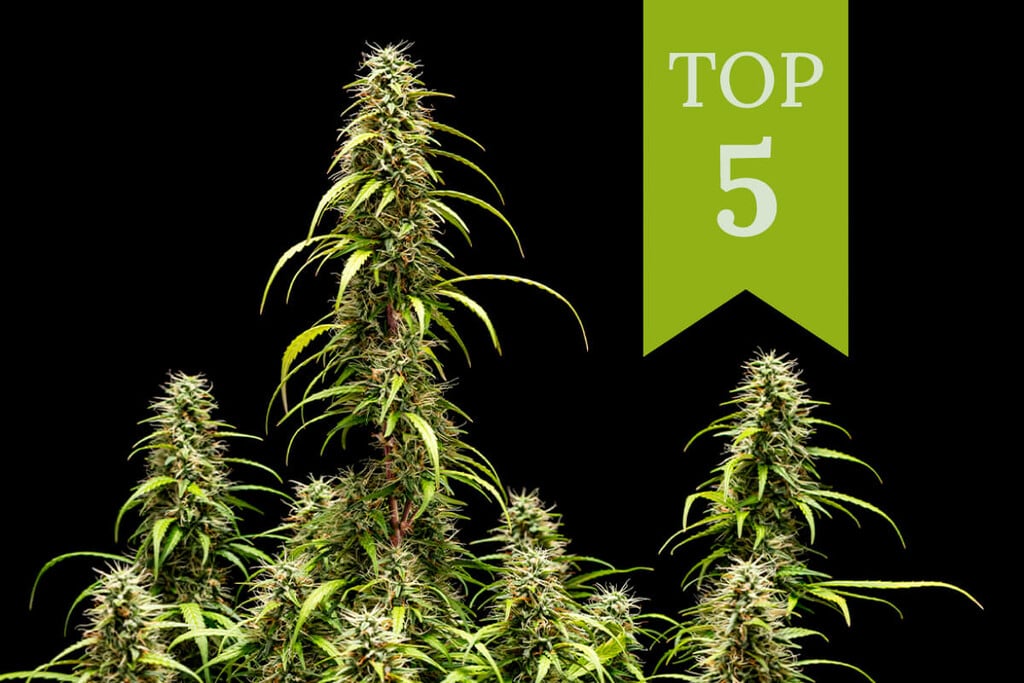
.jpg)
